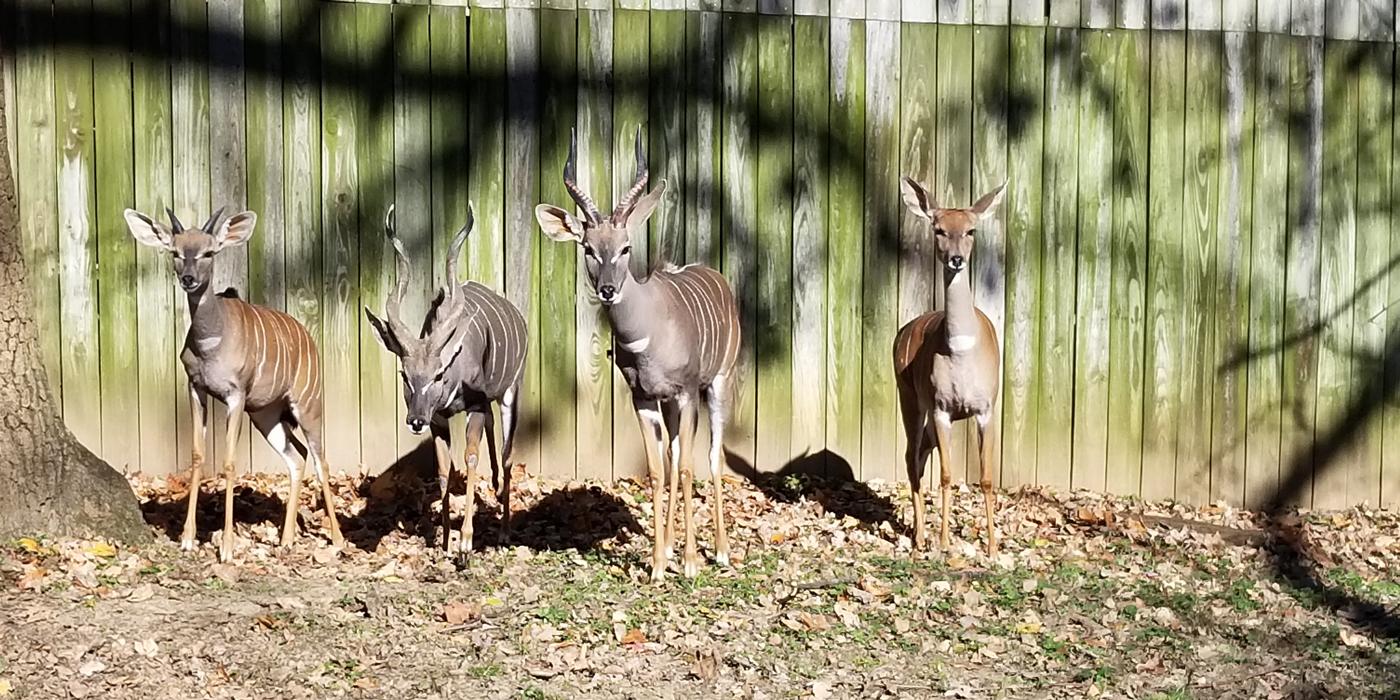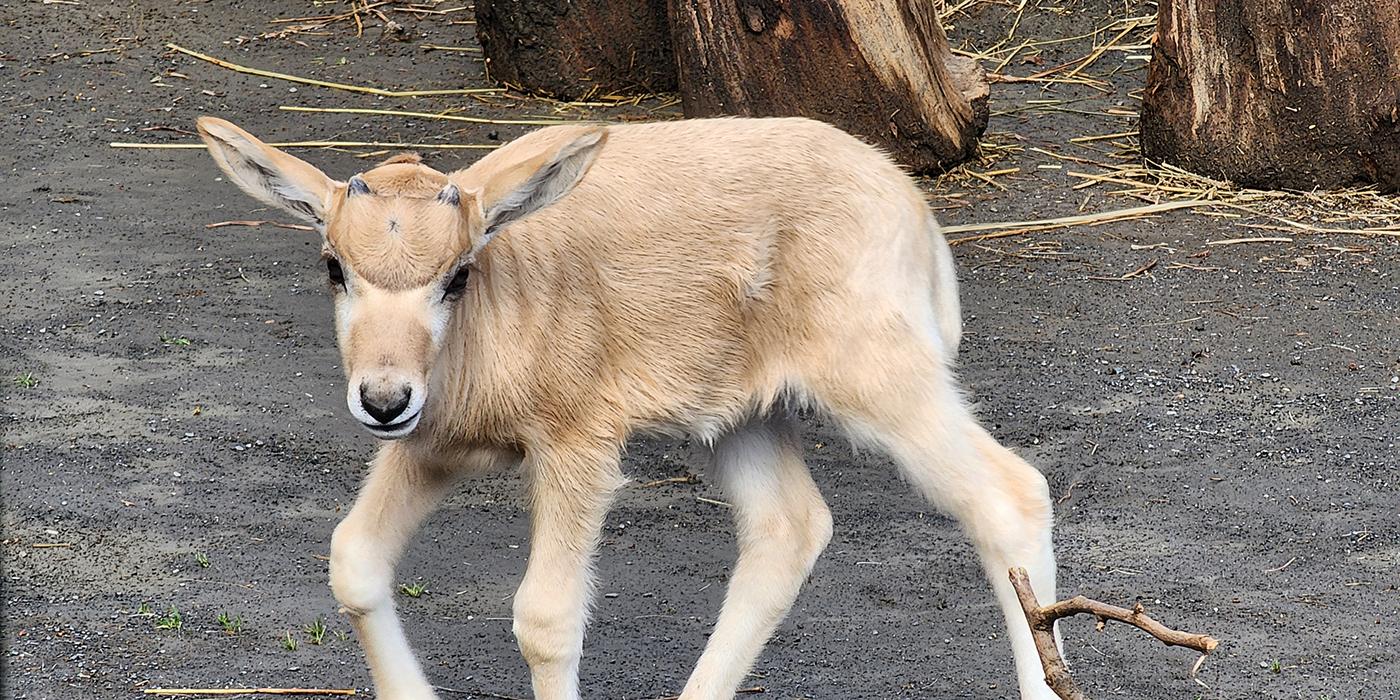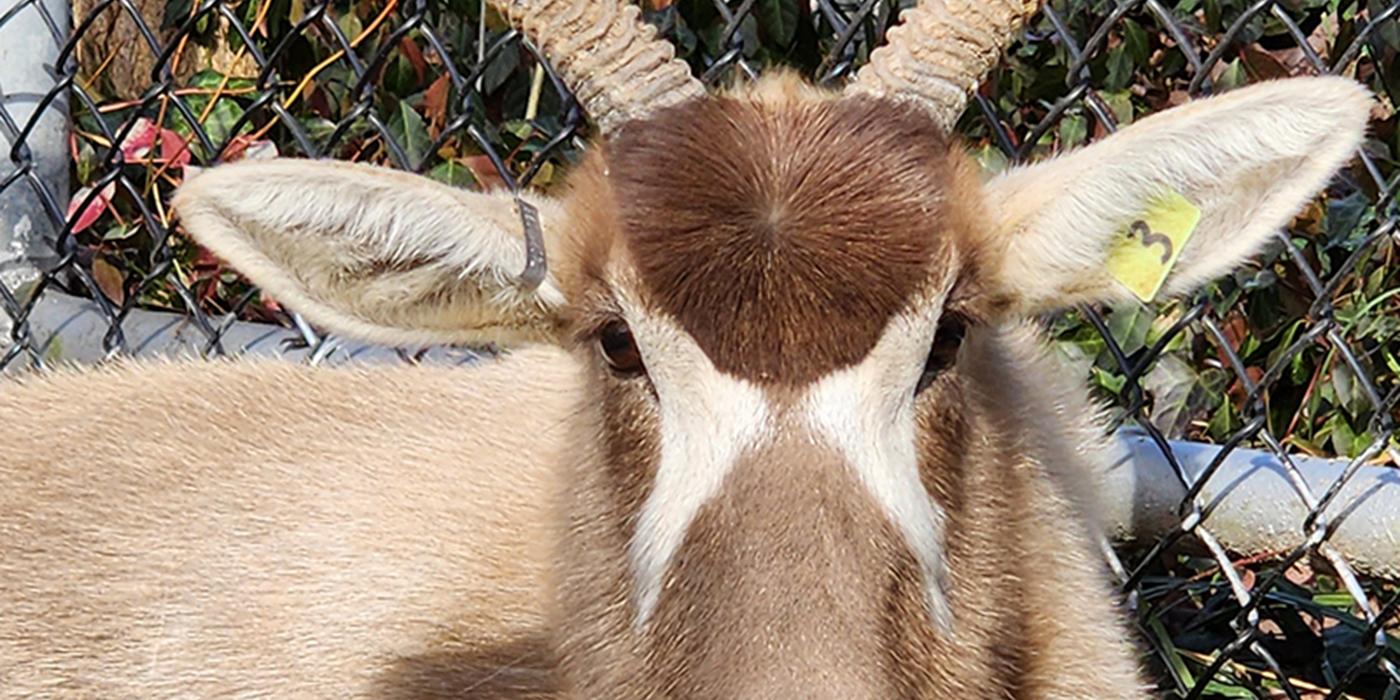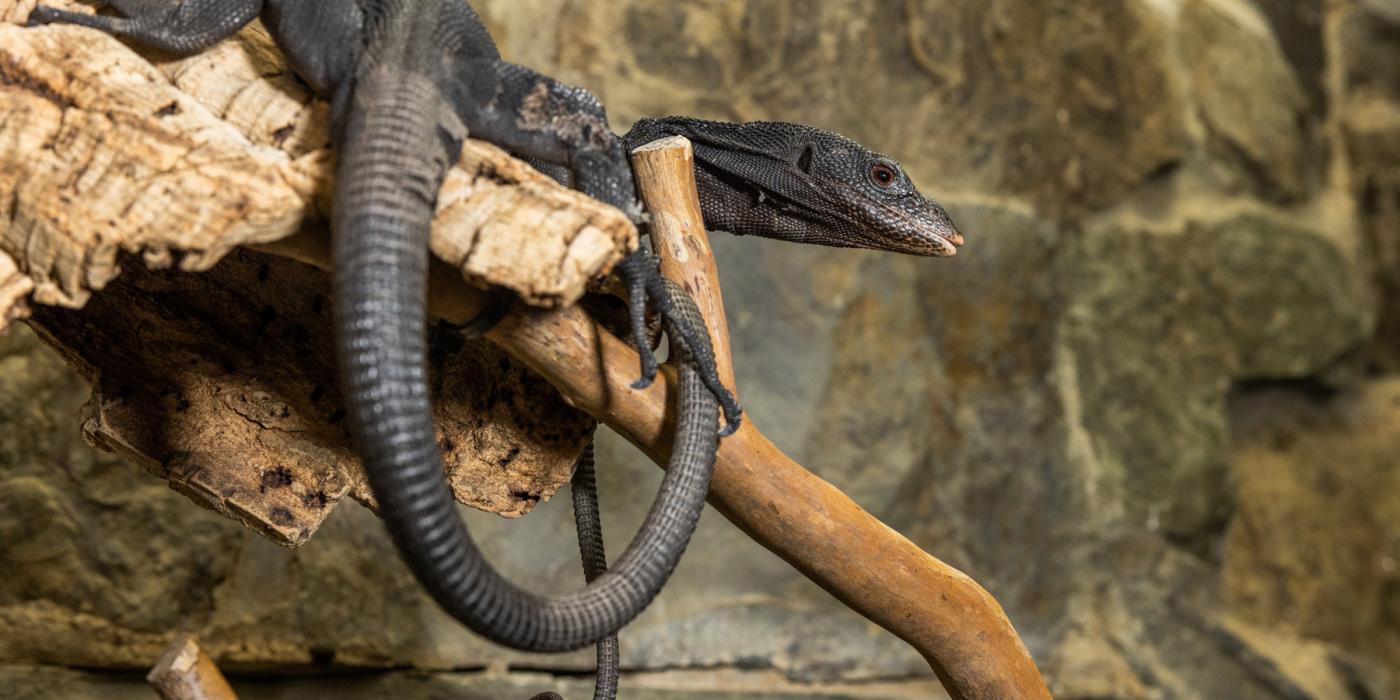Keeping Up with the Lesser Kudu Family
The lesser kudu family at Smithsonian’s National Zoo is growing up! Kushukuru, or “Kushu” for short, just turned 2 years old on Jan. 12 and Toba turned 1 year old in October 2020. Find out what’s happening with our lesser kudu in this Q&A with Gil Myers, assistant curator for Cheetah Conservation Station, and animal keeper Deborah Grupenhoff!
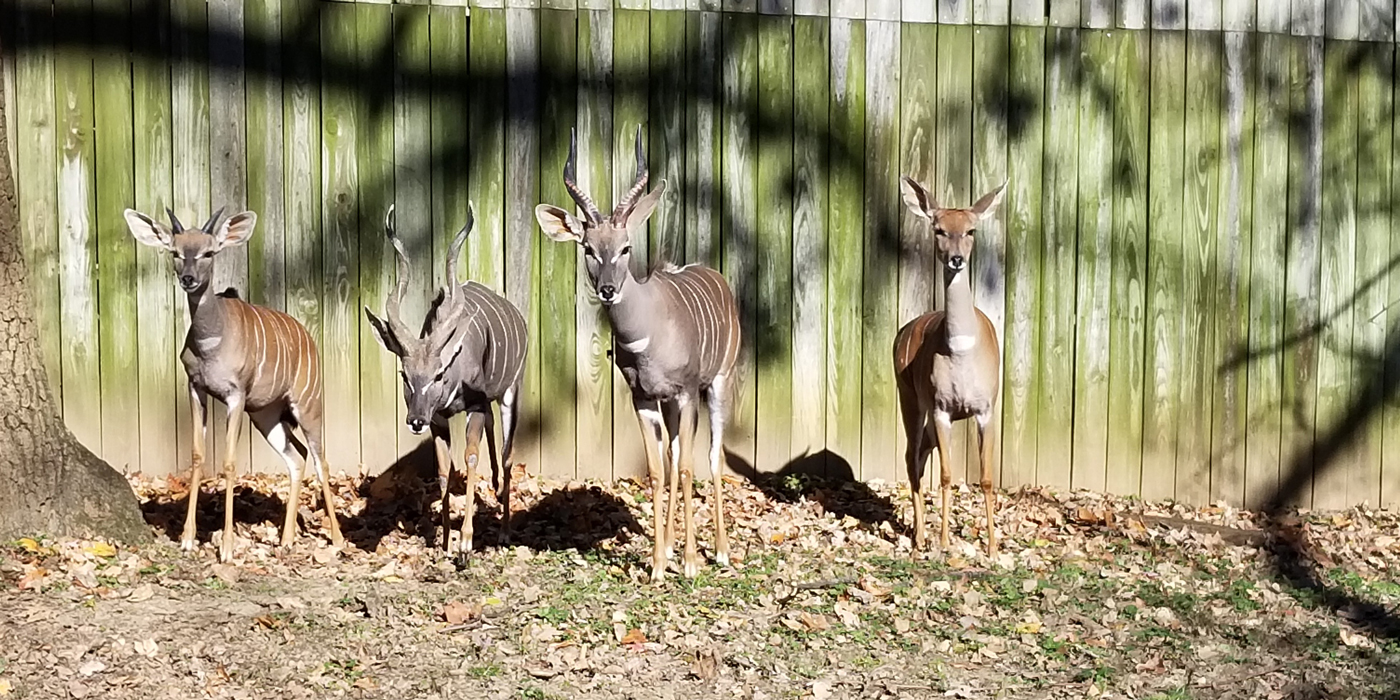
How is the lesser kudu family doing?
They are doing very well. Garrett, our 10-year-old male and father to Kushu and Toba, is still receiving scheduled hoof trims for his ongoing rear hooves, which have grown abnormally his whole life. He is a great father and is teaching his two sons how to be gentle and respectful males.
Kushu and Garrett are often seen sparing, or shoving each other using their horns, in the yard. Even though it may seem like they are fighting, it is a playful act where Garrett is teaching his son how to be an adult lesser kudu male.
What are the kudu’s personalities like?
Garrett is a majestic male and a great leader of the herd. His calm, but dominant, demeanor keeps the atmosphere of the whole herd calm when they are together.
Rogue, our 7-year-old female, is a great mother to Toba and Kushu. She is always looking out for them.
Kushu has become much more confident doing his own thing. Even though he’s almost the size of Garrett, occasionally we’ll see Kushu standing behind Rogue for protection during a situation he finds unusual.
Toba is bold and adventurous. While he relies much more Rogue for protection, he’s built a lot of confidence through Kushu’s guidance. Toba and Kushu are inseparable.
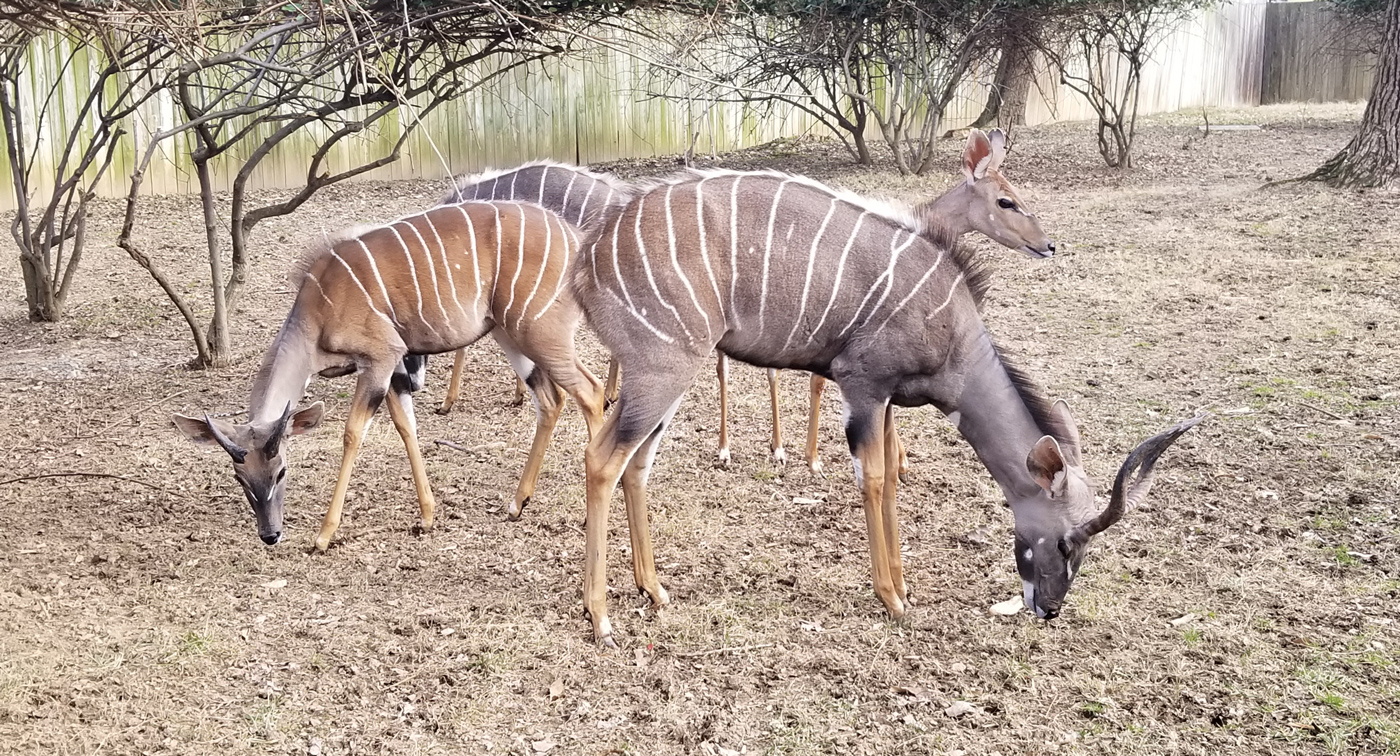
What milestones have Kushu and Toba hit recently?
For lesser kudu, it is all about the transformation of their beautiful spiral horns and coats. At full height, males’ spiral horns can grow up to 3.5 feet and will twist 2.5 times. Kushu's horns have started to spiral and he is very close to reaching his adult coloration, which is a greyish-brown. Toba's horns are just starting to grow out, but he still maintains his adolescent coloration, which is a reddish-brown.
Both Kushu and Toba are still on exhibit with Rogue. As long as there is no aggression or breeding interest, they can remain with her. While lesser kudu become sexually mature around 15 to 18 months, males do not achieve the social status needed to mate until they are 4 or 5 years old. Additionally, lesser kudu males tend to be less aggressive than other species. Since Garrett is a dominant male, these two younger males may not feel the need to assert their dominance for a while.
There is a need for breeding males in the Association of Zoos and Aquariums (AZA) Species Survival Plan populations. Since Kushu is getting older, he will likely go to another institution for breeding soon. While it is always hard for us to see them leave, we are proud that our healthy and well-conditioned animals can contribute to their species’ survival.

How do you train a lesser kudu?
All of our lesser kudu are trained to step on a scale to obtain monthly weights. We also train them to recall into the stall with the sound of a dog squeaker toy. We try to keep lesser kudu together in herds, but there are times that individuals may need to be separated and alone.
For example, since Toba and Kushu are males, we will not be able to house them with Rogue permanently, so we condition everyone to spend time in the stall alone. We will feed each of them in separate stalls and work towards prolonging the separation time. This helps them acclimate to being alone.
We are still working with Rogue, Kushu and Toba on becoming more comfortable with their animal keepers. Kushu and Toba are making progress and once they are comfortable, we’ll be able to do additional training, like we do with Garrett.
Garrett will let us touch him at any time. We can clean his ears, brush him, apply medicine when needed and do hoof trims a few times a week. In the future, we would love for him to keep his foot up on a platform to help with these trimmings.
Rogue is still very nervous around people, so she does not choose to participate in as many training sessions as our male kudu do. To help increase her comfort and build her trust in us, we’ll approach her within a few feet in the exhibit and offer her favorite leafeater biscuits as a treat.
How are the lesser kudu’s interactions with the Abyssinian ground hornbills?
Our two Abyssinian ground hornbills, male Karl and female Karoline, cohabitate very well with our lesser kudu herd. We introduce our lesser kudu calves to our hornbills when they are just a few months old. This way, the kudu are used to seeing Karl and Karoline and learn early on how to interact.
Karoline likes to get herself in the middle of all activity. If the lesser kudu get startled and run off, she may be ruffled by the mini stampede. She and Kushu seem to get along really well and will hang out together. We often find them laying in the sun close to each other.
The hornbills love bugs, so they sometimes pluck insects off the lesser kudu. We have also seen the lesser kudu bow their heads at the hornbills, but that’s just a way for the kudu to tell the hornbills to give them space. The hornbills understand this and usually walk away.
What are some simple steps folks can do at home to help lesser kudu and other wild animals?
The greatest threat to lesser kudu, and many other wild animals, is habitat loss. Wildlife corridors are one way to combat some of the habitat loss because they connect areas of habitat that are disrupted by man-made structures, like highways.
Supporting conservation organizations is one of the best ways to help lesser kudu and other wild animals. This includes conservation organizations that help with reserving habitat for wildlife to zoos! Zoos are sometimes major contributors to small conservation projects, so a portion of your admission or purchase can directly help fund a wildlife conservation project.
This story appears in the February 2021 issue of National Zoo News. The Smithsonian’s National Zoo and Conservation Biology Institute is temporarily closed to help prevent the spread of COVID-19. By making a donation, you help support vital conservation research, improve animal habitats and provide enrichment items that enhance our animals’ well-being. Donate today!
Related Species:

